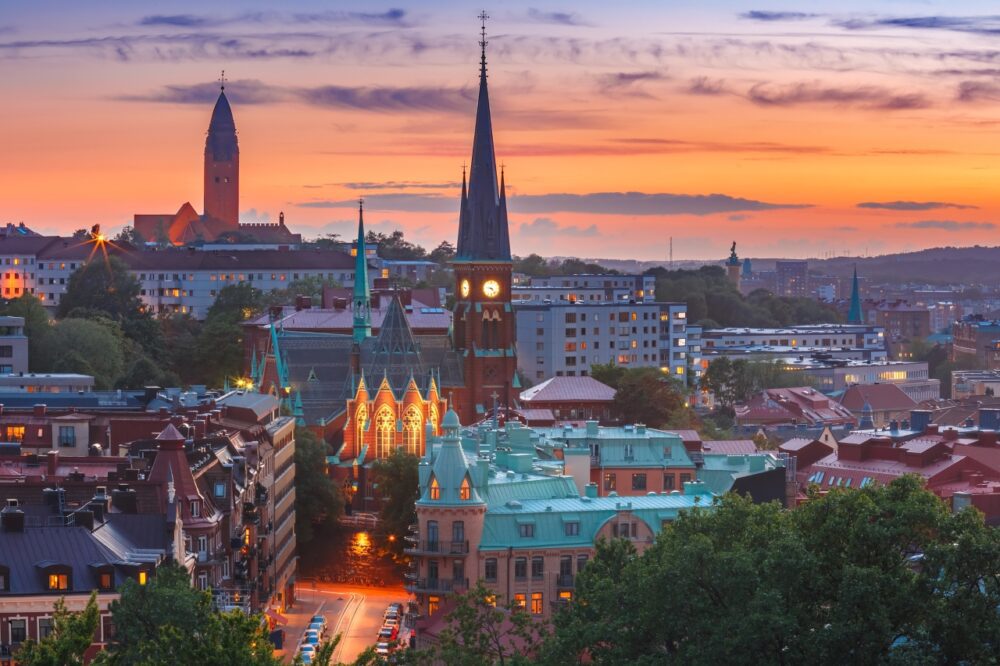
Gothenburg, Sweden’s second-largest city, is a laid-back yet vibrant destination that often flies under the radar. Known for its charming canals, buzzing food scene, and friendly locals, this west coast gem offers a different vibe from Stockholm. Whether you’re exploring Liseberg amusement park, enjoying fresh seafood at Feskekôrka, or wandering the leafy streets of Haga, Gothenburg is full of surprises. But with so many Scandinavian destinations to choose from, you might wonder: is Gothenburg worth visiting? In this post, we’ll explore what makes Gothenburg special, from its maritime heritage to its cosy, welcoming charm. By the end, you’ll know if Gothenburg is the right fit for your next adventure.
Table of Contents
Pros – Reasons You Should Visit Gothenburg
1. Charming Canals and Waterfront
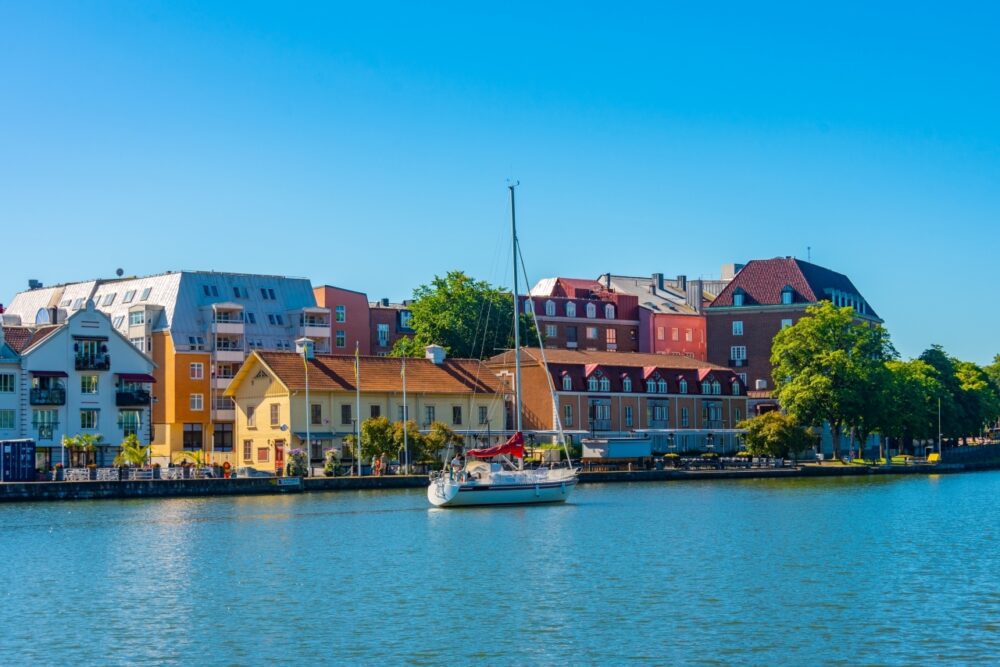
Gothenburg’s canals give the city a picturesque charm, often earning it the nickname “Little Amsterdam.” Originally built for defence, the waterways now offer scenic views and relaxing boat tours. The Paddan Tour is a classic way to explore the city’s history and architecture from the water.
Cruising along the canals, I admired the blend of historic buildings and modern developments. The waterfront area, including the Göta Älv River, is perfect for a leisurely stroll or enjoying fresh seafood at a dockside restaurant. The canals add a unique and tranquil dimension to Gothenburg’s urban vibe.
2. Liseberg Amusement Park
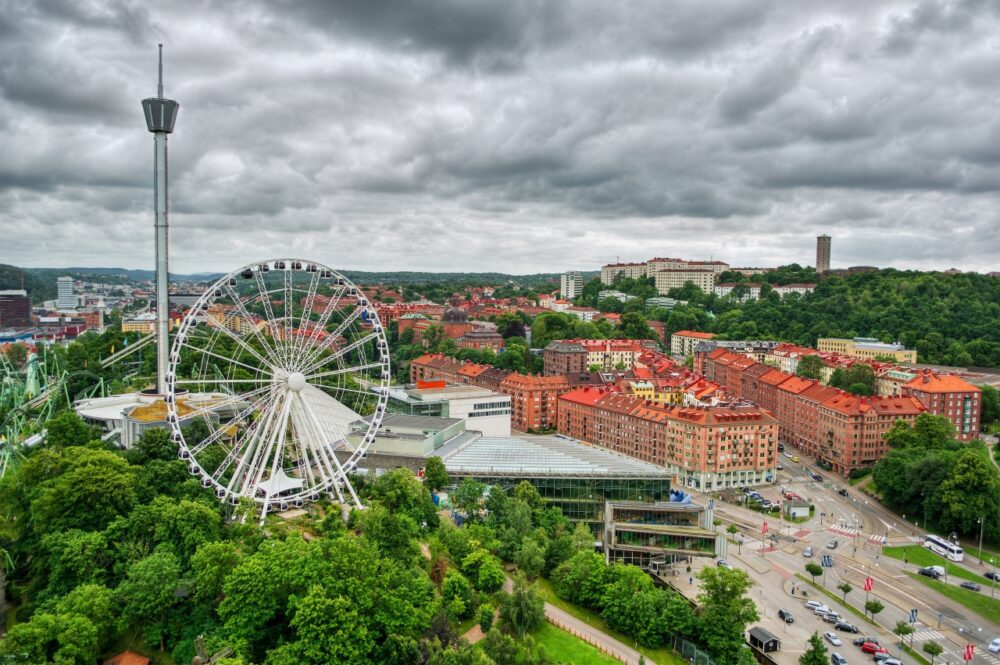
Liseberg, one of Europe’s top amusement parks, is a must-visit for both families and thrill-seekers. From roller coasters like the award-winning Helix to charming carousels and live performances, the park offers something for everyone. During the winter months, it transforms into a magical Christmas Market.
Spending a day at Liseberg was pure fun, with adrenaline-pumping rides and plenty of quieter spots to enjoy the park’s beautiful landscaping. It’s a fantastic mix of excitement and charm, making it one of Gothenburg’s most beloved attractions. Arriving early helps beat the crowds and maximise your time.
3. Vibrant Food Scene
Gothenburg is a food lover’s paradise, particularly for seafood. The city’s proximity to the sea means dishes like shrimp sandwiches, fish soup, and oysters are as fresh as they come. Feskekôrka, the “Fish Church,” is an iconic seafood market and a top spot to sample local delicacies.
Dining at a harbourside restaurant, I enjoyed some of the best fish and chips I’ve ever had, paired with a local beer. Gothenburg is also known for its innovative chefs, with Michelin-starred restaurants like Bhoga and SK Mat & Människor offering creative takes on Nordic cuisine.
4. Stunning Archipelago
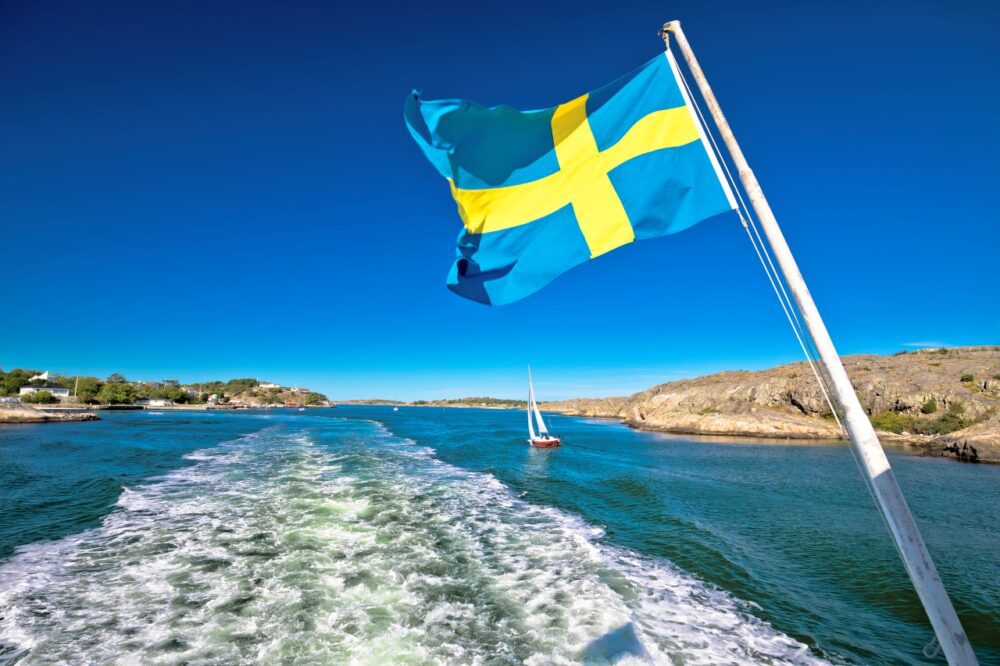
Just a short ferry ride from the city, the Gothenburg Archipelago boasts over 20 islands, each with its own character. Islands like Styrsö and Vrångö offer scenic hikes, bike paths, and pristine beaches, making them perfect for a day trip.
Visiting Styrsö was a highlight of my trip, with its peaceful atmosphere and stunning coastal views. The archipelago is car-free, adding to its charm and tranquillity. Exploring the islands by ferry is affordable and easy, making the archipelago a must for nature lovers.
5. Cosy Neighbourhoods
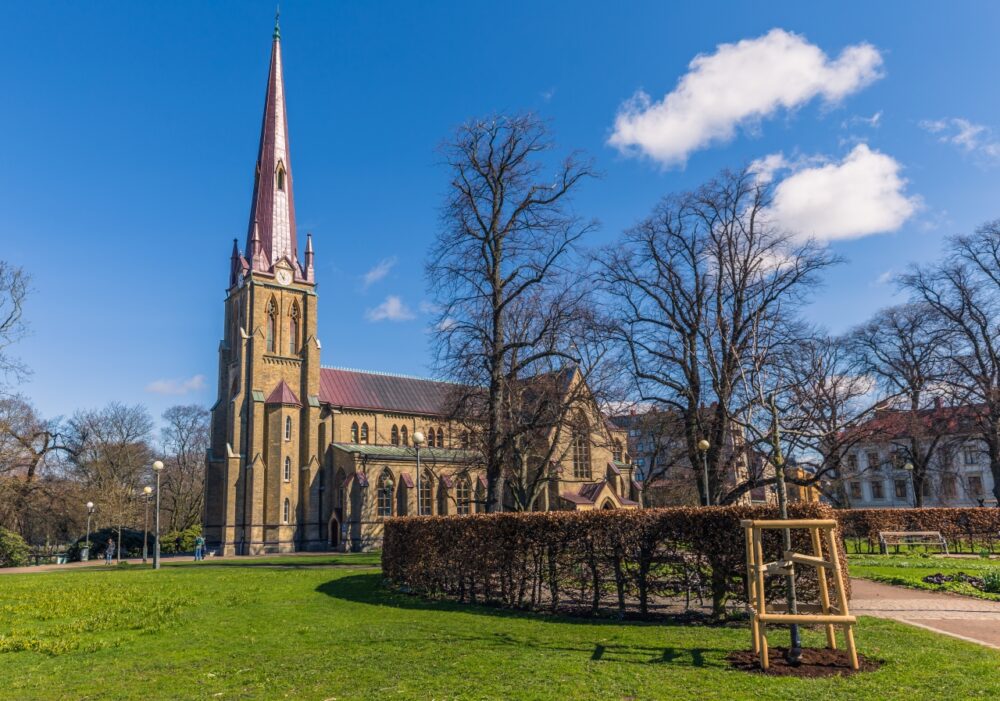
Gothenburg’s neighbourhoods each have their own personality, from the trendy vibes of Linnéstaden to the historic charm of Haga. Haga’s cobblestone streets and wooden houses are particularly inviting, with plenty of independent shops, cafés, and bakeries.
Walking through Haga, I couldn’t resist stopping for a giant cinnamon bun at Café Husaren, a local favourite. Linnéstaden, on the other hand, is perfect for a lively evening out, with its bars and international eateries. Exploring Gothenburg’s neighbourhoods offers a mix of tradition and modernity.
6. World-Class Museums
Gothenburg is home to a variety of excellent museums, catering to diverse interests. The Universeum combines science and nature, offering interactive exhibits and a rainforest environment. For art lovers, the Gothenburg Museum of Art features works by Nordic and international masters.
I was particularly impressed by the Volvo Museum, which celebrates the city’s automotive heritage with classic cars, futuristic designs, and fascinating stories. Many museums offer family-friendly activities, making them perfect for visitors of all ages.
7. Green Spaces and Parks
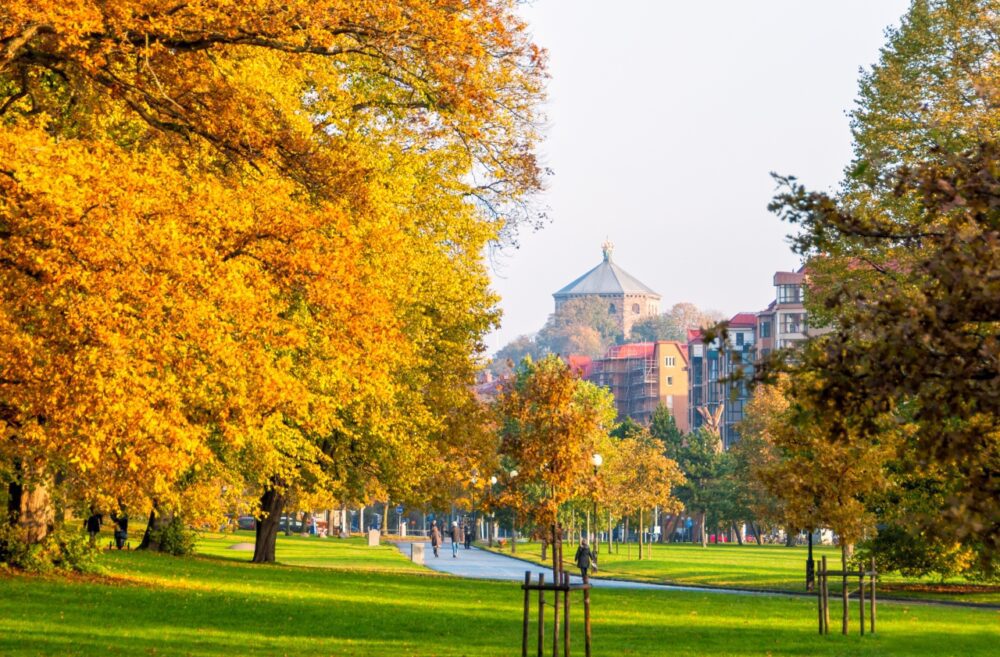
Gothenburg is one of Sweden’s greenest cities, with numerous parks providing a peaceful escape from the urban bustle. Slottsskogen, the city’s largest park, is a favourite spot for picnics, walks, and even seeing animals like moose and penguins in its mini-zoo.
Strolling through Slottsskogen on a sunny afternoon, I was struck by how well-maintained and inviting the park felt. It’s an ideal place to relax, exercise, or simply soak in the beauty of nature. For more formal gardens, Botaniska Trädgården offers one of Europe’s largest botanical collections.
8. Friendly Atmosphere
Gothenburg has a reputation for being one of Sweden’s friendliest cities. Locals are known for their laid-back attitude and willingness to help visitors, creating a warm and welcoming atmosphere.
During my visit, I found that shopkeepers, café staff, and even strangers on the street were happy to offer recommendations or directions. This friendliness makes Gothenburg feel approachable and easy to navigate, even for first-time travellers.
9. Sustainable City Initiatives
Gothenburg is a leader in sustainability, with eco-friendly transport options, green energy initiatives, and a strong focus on recycling and waste reduction. Public transport is reliable and runs on renewable energy, while bike lanes make cycling around the city a breeze.
Renting a bike and exploring the city’s parks and waterfront was not only enjoyable but felt like a meaningful way to embrace Gothenburg’s green ethos. The city’s commitment to sustainability is inspiring and ensures a positive impact on the environment.
10. Perfect for All Seasons
Gothenburg offers something unique no matter the season. Summers are lively, with outdoor dining, festivals, and sunny days by the sea. Autumn brings stunning foliage and cosy café culture, while winters offer festive Christmas markets and a magical atmosphere at Liseberg.
I visited in spring, when the flowers were blooming, and the city felt alive with energy. Each season brings its own charm, making Gothenburg a year-round destination. Whether you prefer warm summer adventures or winter festivities, the city has plenty to offer.
Cons – Things You Should Consider When Visiting Gothenburg
1. Unpredictable Weather
Gothenburg’s weather can be temperamental, with frequent rain and sudden changes, even in summer. The coastal location often brings strong winds, which can make the city feel colder than expected.
Packing layers and a waterproof jacket is essential, regardless of the season. While the weather can be challenging, the city’s cosy cafés and indoor attractions, like the Universeum or the Volvo Museum, offer great alternatives on rainy days. Checking the forecast daily will help you plan accordingly.
2. High Cost of Living
As with many Scandinavian cities, Gothenburg can be expensive. Dining out, accommodation, and attractions may feel pricey, particularly for budget travellers. Even simple meals or transport costs can add up quickly.
To save money, consider eating at food markets like Saluhallen or enjoying street food. Public transport day passes and exploring free attractions, such as Slottsskogen Park, can also help stretch your budget. Planning ahead ensures you get the most value from your visit.
3. Limited Nightlife Variety
While Gothenburg has a lively bar scene and some great live music venues, its nightlife doesn’t rival larger cities like Stockholm or Berlin. Options can feel limited, especially for those looking for late-night clubs or diverse entertainment.
For a fun night out, focus on trendy areas like Linnéstaden, where you’ll find atmospheric bars and pubs. Checking local event listings or visiting during festivals can help you uncover more unique experiences.
4. Traffic and Parking Challenges
Driving in Gothenburg can be tricky, especially for visitors unfamiliar with the city’s layout. Narrow streets, frequent roadworks, and limited parking in central areas can make navigating by car frustrating.
Using Gothenburg’s excellent public transport system—trams, buses, and ferries—is a much easier way to get around. If driving is necessary, opt for accommodations with parking or park outside the city centre and use public transport to reach key attractions.
5. Crowded Attractions in Peak Season
Popular attractions like Liseberg Amusement Park, the Gothenburg Archipelago, and Haga can get quite crowded during summer, weekends, and holidays. Long queues and packed spaces can detract from the experience.
To avoid the crowds, visit during the shoulder seasons (spring or autumn) or arrive at attractions early in the day. Exploring lesser-known islands in the archipelago or quieter neighbourhoods like Majorna can also provide a more relaxed experience.
When to Visit Gothenburg
The best time to visit Gothenburg is late spring (May to June) and summer (July to August), when the city bursts to life with long, sunny days, blooming parks, and lively festivals. Summers are perfect for exploring the archipelago or enjoying open-air events like the Gothenburg Culture Festival. Spring is quieter and ideal for strolling through Slottsskogen Park or sipping coffee in Haga. Winters are chilly but cosy, with festive markets at Liseberg Amusement Park offering twinkling lights and hot mulled wine.
How to Get to Gothenburg
Gothenburg Landvetter Airport (GOT), located 25 kilometres southeast of the city centre, is the main gateway, with flights operated by airlines like SAS, Norwegian, and Ryanair. From the airport, the Flygbussarna Airport Bus takes around 30 minutes to reach the central station and is a budget-friendly option. Taxis and ride-hailing apps like Bolt are also available but pricier. Gothenburg is well-connected by trains, with regular services from Stockholm, Malmö, and Copenhagen, and international buses provide an affordable alternative.
Where to Stay in Gothenburg
Gothenburg offers a variety of accommodation options, whether you’re after charm, convenience, or budget-friendliness:
- Luxury: City Centre or Avenyn – Stay close to shopping, dining, and major attractions. Options include Upper House, a five-star gem with city views, or Hotel Pigalle, a boutique choice with a vintage Parisian vibe.
- Mid-range: Linné or Haga – Trendy areas with cosy cafes and local charm. Try Hotel Flora, offering stylish rooms near the centre, or Clarion Hotel Post, blending modern comfort with a historic building.
- Budget: Göta Älv Riverfront or Near Central Station – Affordable options like STF Göteborg City Hotel or Linné Hostel provide value and easy access to sights.
Getting Around Gothenburg
Gothenburg’s excellent Västtrafik public transport system includes trams, buses, and ferries, making it easy to explore the city and its surrounding archipelago. The Göteborg City Card provides unlimited travel and discounts on attractions. Trams are the most iconic way to get around, with routes covering everything from the central station to leafy suburbs like Linné. Ferries are a scenic way to reach islands like Styrsö and Brännö. For eco-friendly travel, Gothenburg’s Styr & Ställ bike-sharing scheme is perfect for exploring the flat city streets and parks.
How Long to Spend in Gothenburg
Two to three days is ideal for enjoying Gothenburg’s highlights, including a stroll through the charming Haga District, visiting Liseberg Amusement Park, and exploring the Gothenburg Museum of Art. This allows time for a boat trip to the nearby southern archipelago, where rocky islands and quaint fishing villages await. With an extra day, head to Universeum, Scandinavia’s largest science centre, or explore the vibrant food scene at Feskekôrka (Fish Church). Gothenburg’s mix of culture, waterfront charm, and relaxed atmosphere makes it a perfect getaway on Sweden’s west coast.
Conclusion
So, is Gothenburg worth visiting? If you love relaxed city vibes, incredible food, and a mix of urban life and coastal charm, Gothenburg is a fantastic choice. The city’s friendly atmosphere, great public transport, and compact size make it easy to explore and enjoy. That said, it might feel quieter compared to larger cities, which could be a drawback for those seeking a bustling metropolis. But for travellers who appreciate authentic experiences, fantastic seafood, and a charming maritime spirit, Gothenburg is a delightful destination that’s well worth the visit.
